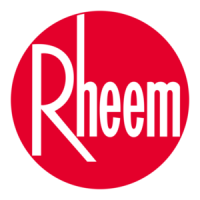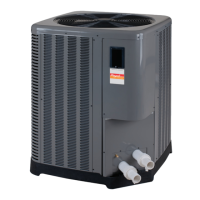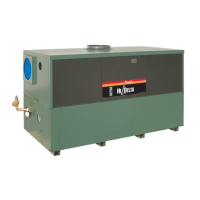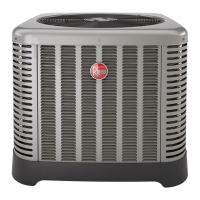81
The default setting for Auxiliary Outputs 1 and 2 is to be
controlled through the Raymote app using Wi-Fi. To use
this mode, the heater must be connected to a local Wi-Fi
network in order to manually command the Auxiliaries or
run automation routines Online. Alternatively, the Auxiliary
outputs can be congured to be controlled by the built-
in local schedule, which allows for up to four periods
of operation per day, or by the built-in automatic mode
"Auxiliary Heat," which commands the auxiliary output
to operate an external heater. For more information on
the control modes for Auxiliary Outputs 1 and 2, refer to
section 13 of the Installer menu on page 21.
AUX1
AUX2
C2
NO2
NC2
C1
NO1
NC1
12V N GND
Pool Lights
Power Source
Heat Pump
Auxiliary Outputs
This example assumes a pool
light that works with 12V.
Similar wiring configuration
applies for other voltages.
Other voltages may require a
transformer or other power
supply.
Use a 2-wire cable to supply
power to the auxiliary output
“C” terminals. Use the “NO”
to return to the lights.
Figure 149. Example 1: Pool Light Wiring
AUX1
AUX2
C2
NO2
NC2
C1
NO1
NC1
L1 N GND
Air Blower
Power Source
Heat Pump
Auxiliary Outputs
IN OUT IN OUTIN OUT IN OUT
Use a 3-wire cable to supply
power to the field-supplied
relay and the auxiliary output
“C” terminals. Use the “NO”
terminal to drive the external
relay.
This example assumes an
air blower that works with
120V.
Figure 150. Example 2: Air Blower Wiring
1. Determine the power requirements of the external
device that will be controlled or energized by the
auxiliary output(s).
2. Follow the general instructions for wiring external
devices to run the control signal or power line(s)
from the power source to the heater control box
and from the control box to the device being
controlled/energized. Refer to the next examples
of external control using the Auxiliary outputs:
- Controlling pool lights
- Controlling an air blower
- Controlling an external heater from the HPPH
Auxiliary output.

